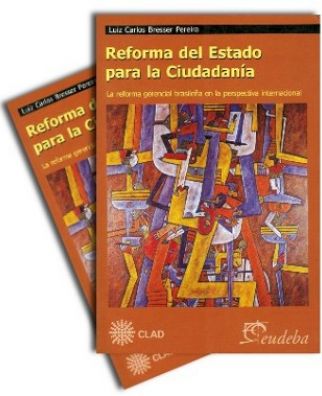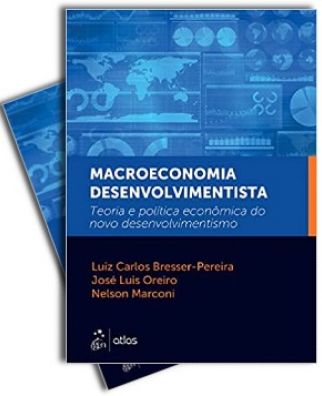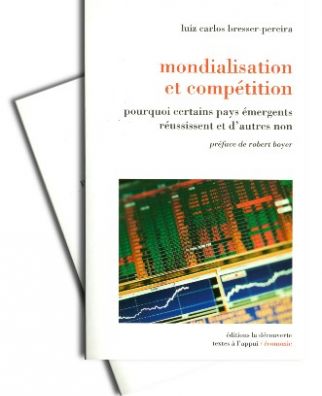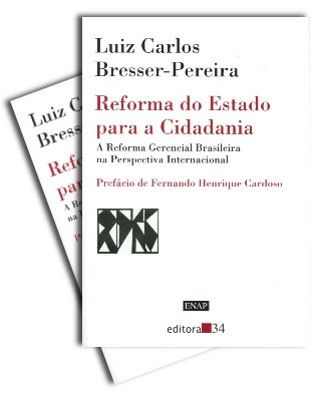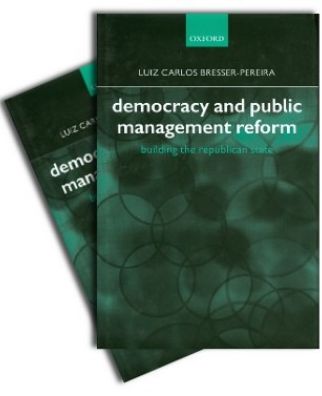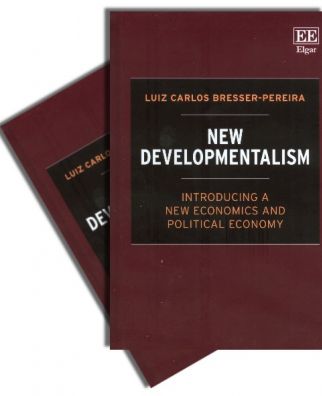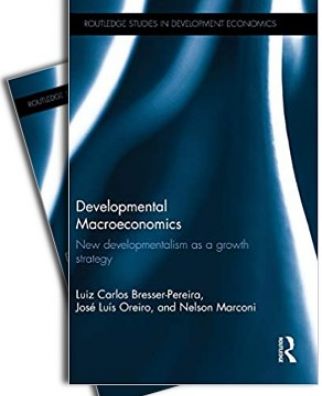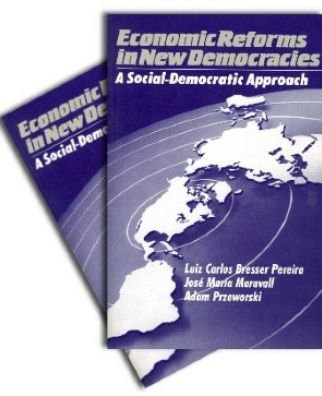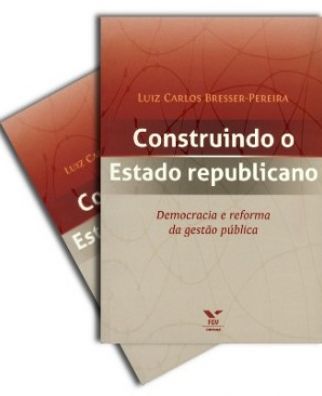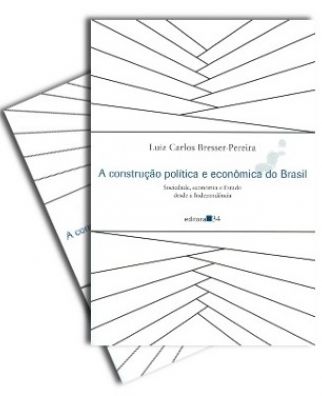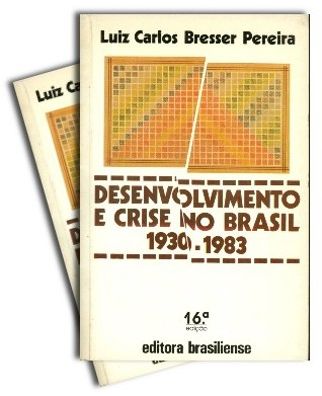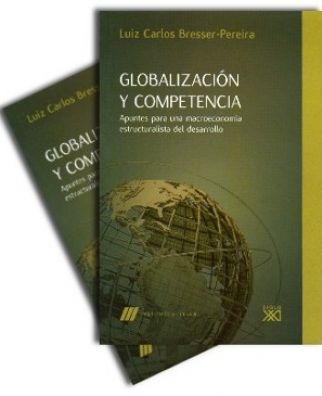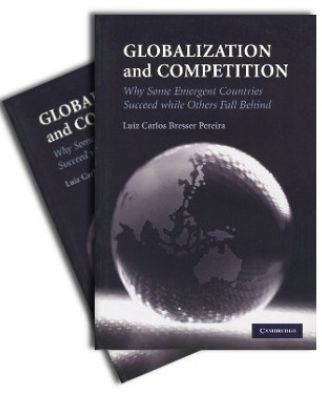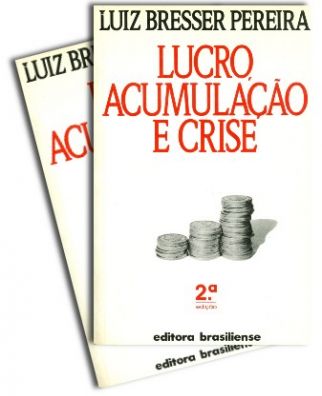1981. A sistematic analysis on social classes in contemporary capitalism distinguishing social classes from social strata and showing how the two concepts are interconected. English version available. (Paper: published only in this site)
OTHER TYPES OF WORKS
ACADEMIC PAPERS
1981. A systematic analysis of social classes in contemporary capitalism distinguishes social classes from social strata and shows how the two concepts are interconnected. Portuguese version available. (Paper: published only in this site)
1981 This paper explains stagflation with the administrative or cost theory of inflation emphasizing money endogeneity. This paper contains my first vision of inertial inflation: in one of the sessions I explain high inflation by the fact that firms A, B, and C index their princes increasing them according to the going rate of inflation in a staggered way. (Paper: Revista de Economia Política) *
1980. Brazilian inflation is consequence of distributive conflict involving the transference of income from the poor to the rich. Monopolist and monopsonist power facilitates such transference. (Paper: Encontros com a Civilização Brasileira)
1979. A comparison between relatively socialist China and technobureaucratic URSS after a visit to these two countries. (Paper: Cadernos de Opinião)
1978. Multinational entreprises involve a new form of dependency, requiring carefull scrutiny. Brazil does not need so much of capital as it is said. The Brazilian bourgeoisie is associated to multinationals, but the state's technobureaucracy is not, and may be a source of national autonomy. (Paper: Encontros com a Civilização Brasileira)*
1978. Since 1974 the relative economic surplus (profits+salaries/wages) stops to increase. This has consequences on macroeconomic stability. (Paper: Estudos Econômicos)
1978. Multinational enterprises contribute to economic development but are cause of income concentration.(Paper: Revue Tiers Monde)
1978. Family planning programs are only effective when they strategically fill up the 'knowledge gap' that occurs when families are already urban, but did not realize that their interests in limiting childre changed. (Revista de Administração de Empresas)
1977. The transition to democracy and, gradually, to socialism predicted on the basis of the rupture of the alliance of the bourgeoisie with the military technobureaucracy. (Paper: Contexto).
1977 [1980]. To the emergence of the new middle class - the technobureaucratic or professional middle class - corresponds a new relation of production, the organization, and a new mode of production: the technobureaucratic or state mode of production. Portuguese version available.(Paper: LHomme et Société)
1977. o the emergence of the new middle class - the technobureaucratic or professional middle class - corresponds a new relation of production, the organization, and a new mode of production: the technobureaucratic or state mode of production. French version available. (Paper: Estudos CEBRAP)
1975. The basic characteristics of growth model that prevailed during the military regime: the technobureaucratic-capitalist model of industrialized underdevelopment. In macroeconomic terms it was based on the supply side on the production of luxury goods, on the demand side, on concentration of income from the middle-class upwards. French version available(
1975. The basic characteristics of growth model that prevailed during the military regime: the technobureaucratic-capitalist model of industrialized underdevelopment. In macroeconomic terms, on the supply side, it was based on the production of luxury goods; on the demand side, on the concentration of income from the middle-class upwards. Portuguese version available.
1975. A survey of Kaldor's growth and distribution model. (Paper em Revista Brasileira de Economia)
1975. The Harrod-Domar model of growth is consistent with factor substitubility provided that a coefficient of substitution of capital for labor is added. This formalization is done here.(Paper em Estudos Econômicos)
1974 [1991]. A survey of the theory of the decision to invest and a critique of the neoclassical emphasis on the interests or on the normal profits. Investments, as the classical economists knew, depend essentially on profit expectations substantially higher than the interst rate. Variations in the expected profit rate are more important in explaining capital accumulation than variations in the interest rate. It elaborates "A decisião de investir, os lucros e os juros". (Paper: Texto para Discussão FGV Economia)
1974. The "new development model" begins in Brazil in the late 1960s, and later I called "modelo de subdesenvolvimento industrializado". Contrarily to what Celso Furtado predicted, income concetration benefiting the middle classes was behind the resumption of growth as it made aggregate demand consistent with the production of luxury consumption goods by multinationals. Portuguese and English versions available. This paper elaborates on the 1970 article, "Dividir ou multiplicar: A distribuição da renda e a recuperação da economia brasileira".(Paper: Revista Dados)
(Paper: Desarrollo Economico)
1973. The "new development model" begins in Brazil in the late 1960s, and later I called "modelo de subdesenvolvimento industrializado". Contrarily to what Celso Furtado predicted, income concetration benefiting the middle classes was behind the resumption of growth as it made aggregate demand consistent with the production of luxury consumption goods by multinationals. Spanish and English versions available. This paper elaborates on the 1970 article, "Dividir ou multiplicar: A distribuição da renda e a recuperação da economia brasileira". (Paper: Revista Dados)


